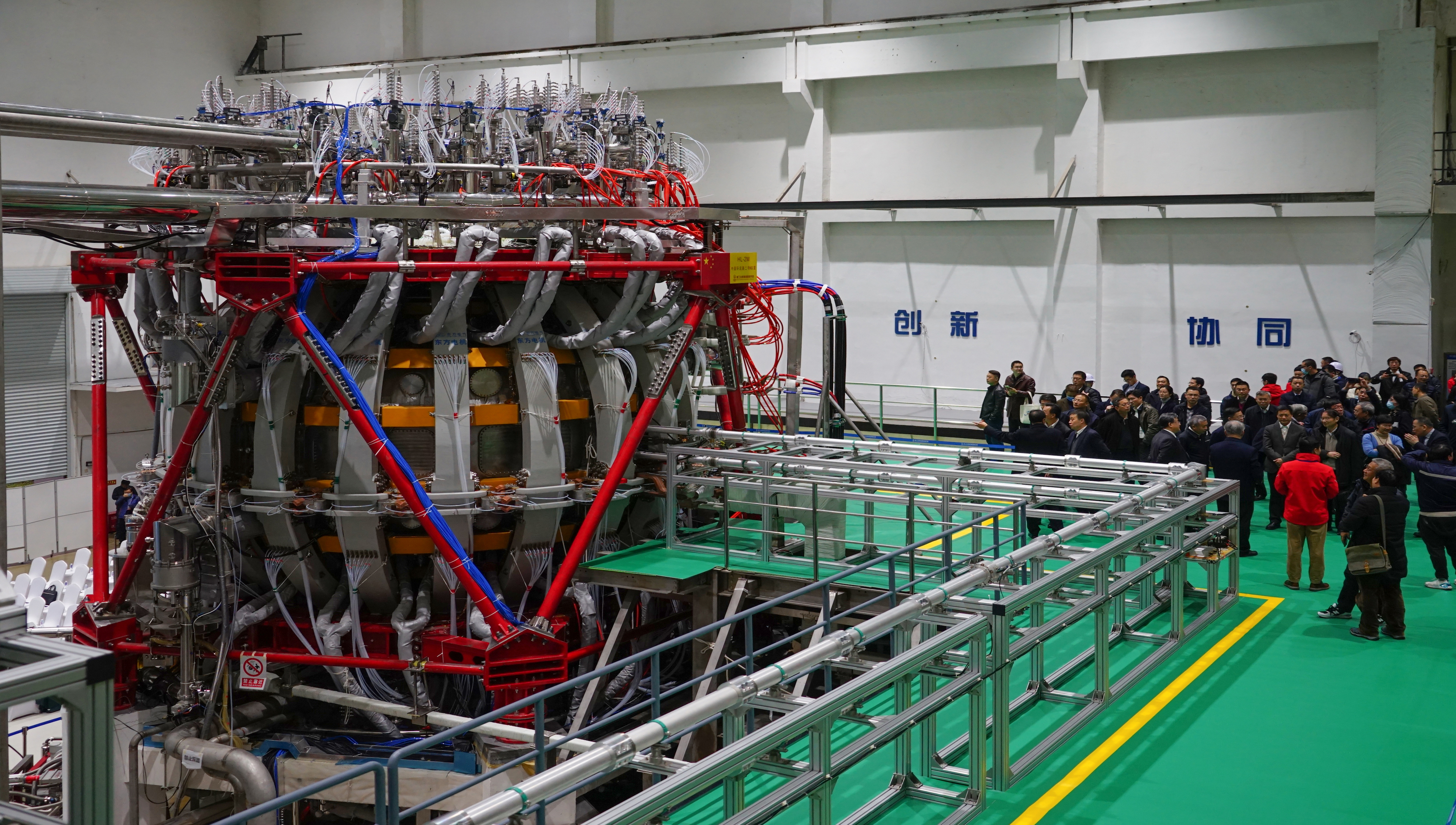China's $1 trillion 'artificial sun' fusion reactor just got five times hotter than the sun
The experimental fusion reactor could help to unlock near limitless clean energy.

China's "artificial sun" has set a new world record after superheating a loop of plasma to temperatures five times hotter than the sun for more than 17 minutes, state media reported.
The EAST (Experimental Advanced Superconducting Tokamak) nuclear fusion reactor maintained a temperature of 158 million degrees Fahrenheit (70 million degrees Celsius) for 1,056 seconds, according to the Xinhua News Agency. The achievement brings scientists a small yet significant step closer to the creation of a source of near-unlimited clean energy.
The Chinese experimental nuclear fusion reactor smashed the previous record, set by France's Tore Supra tokamak in 2003, where plasma in a coiling loop remained at similar temperatures for 390 seconds. EAST had previously set another record in May 2021 by running for 101 seconds at an unprecedented 216 million F (120 million C). The core of the actual sun, by contrast, reaches temperatures of around 27 million F (15 million C).
Related: 5 sci-fi concepts that are possible (in theory)
"The recent operation lays a solid scientific and experimental foundation towards the running of a fusion reactor," experiment leader Gong Xianzu, a researcher at the Institute of Plasma Physics of the Chinese Academy of Sciences, said in a statement.
Scientists have been trying to harness the power of nuclear fusion — the process by which stars burn — for more than 70 years. By fusing hydrogen atoms to make helium under extremely high pressures and temperatures, so-called main-sequence stars are able to convert matter into light and heat, generating enormous amounts of energy without producing greenhouse gases or long-lasting radioactive waste.
But replicating the conditions found inside the hearts of stars is no simple task. The most common design for fusion reactors, the tokamak, works by superheating plasma (one of the four states of matter, consisting of positive ions and negatively-charged free electrons) before trapping it inside a donut-shaped reactor chamber with powerful magnetic fields.
Sign up for the Live Science daily newsletter now
Get the world’s most fascinating discoveries delivered straight to your inbox.
Keeping the turbulent and superheated coils of plasma in place long enough for nuclear fusion to happen, however, has been a painstaking process. Soviet scientist Natan Yavlinsky designed the first tokamak in 1958, but no one has ever managed to create an experimental reactor that is able to put out more energy than it takes in.
One of the main stumbling blocks has been how to handle a plasma that's hot enough to fuse. Fusion reactors require very high temperatures — many times hotter than the sun — because they have to operate at much lower pressures than where fusion naturally takes place inside the cores of stars. Cooking plasma to temperatures hotter than the sun is the relatively easy part, but finding a way to corral it so that it doesn’t burn through the reactor walls (either with lasers or magnetic fields) without also ruining the fusion process is technically tricky.
EAST is expected to cost China more than $1 trillion by the time the experiment finishes running in June, and it is being used to test out technologies for an even bigger fusion project — the International Thermonuclear Experimental Reactor (ITER) — that’s currently being built in Marseille, France.
Set to be the world's largest nuclear reactor and the product of collaboration between 35 countries — including every state in the European Union, the U.K., China, India and the U.S. — ITER contains the world's most powerful magnet, making it capable of producing a magnetic field 280,000 times as strong as the one around the Earth, Live Science previously reported. The fusion reactor is expected to come online in 2025, and it will provide scientists with even more insights into the practicalities of harnessing star power on Earth.
China is also pursuing more of its own programs to develop nuclear fusion power — it is conducting inertial confinement fusion experiments and is planning to complete a new tokamak by the early 2030s.
Elsewhere, the first viable fusion reactor could be completed in the United States as soon as 2025, and a British company hopes to be commercially generating electricity from fusion by 2030.
Editor's note: Tom Metcalfe contributed to this article.
Originally published on Live Science.

Ben Turner is a U.K. based staff writer at Live Science. He covers physics and astronomy, among other topics like tech and climate change. He graduated from University College London with a degree in particle physics before training as a journalist. When he's not writing, Ben enjoys reading literature, playing the guitar and embarrassing himself with chess.









